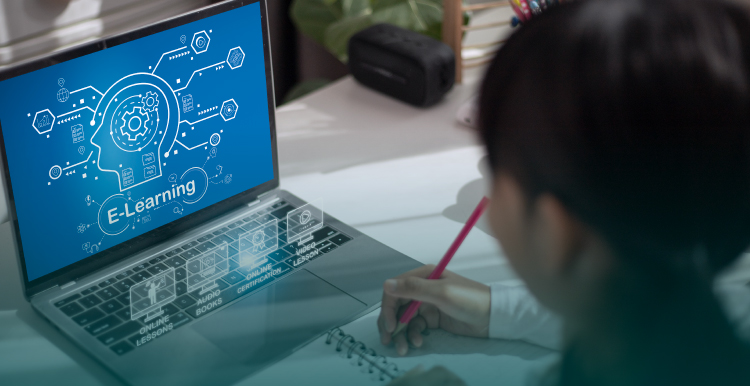Education has advanced with technology-infused tools. However, it is critical that educators carefully assess new technologies to ensure they support learning goals and student success. Innovative tech is revolutionizing learning experiences, making learning more engaging, personalized, and accessible than ever. From ChatGPT chatbots to virtual reality experiences, cutting-edge technologies are revolutionizing education worldwide.
1. Artificial Intelligence
Artificial intelligence (AI) is revolutionizing education by creating personalized learning experiences tailored to individual student needs. From adaptive learning platforms to gamified content, AI allows them to make progress at their own pace while mastering educational concepts. AI empowers educators to close skill gaps and accelerate students’ progress with predictive analytics. Automated grading tools and automated assessment platforms facilitate efficient assessment.
AI can assist educators in accomplishing a range of administrative tasks, from student enrollment and attendance tracking to records management. School security systems like ZeroEyes feature AI-enhanced security technology to identify weapons, self-harm incidents, and warning signs as part of a proactive safety network.
2. Augmented Reality
Augmented reality (AR) brings digital content into the physical world for an interactive and engaging learning experience. AR can make abstract concepts tangible—for instance, students could learn about planets by viewing them in 3D or interact with virtual anatomy models—providing multisensory engagement for visual, auditory, and kinesthetic learners as they increase comprehension and retention of complex subjects.
AR is increasingly used for virtual field trips and reading, which provide students with immersive historical and natural environments without leaving the classroom. Another application of AR in education is augmented collaboration, in which students collaborate together on shared virtual content.
3. Robotics
Educational robotics provides students with a versatile tool for individualized learning that transcends STEM boundaries while making technology relatable and fostering an intuitive understanding of complex concepts.
Programmable robots from WhalesBot provide an exciting learning environment in the classroom for coding education, turning learning into an engaging journey that’s sure to change their futures. By taking advantage of popular block coding websites, learners can easily build and code their robots. Educational robotics requires a shift in teaching methodologies; when combined with classroom robotics, teachers become guides, mentors, and collaborators for students in their class.
4. Cloud Computing
Cloud solutions help schools use interactive learning tools, like teamwork platforms and virtual labs, which encourage students to engage more and understand difficult ideas better. Furthermore, these technologies make it simple for students to access and save their work regardless of their location or device.
Cloud-based systems offer schools an effective yet cost-efficient alternative to traditional infrastructure, eliminating the need for expensive hardware and software purchases. Furthermore, these tools enable educators to easily update educational content quickly. Cloud computing also allows educators to collect student performance data and identify learning gaps more efficiently, which in turn allows them to develop personalized learning plans for every child in their care.
5. Artificial Intelligence in Assessment
Artificial intelligence tools have seen explosive growth in education. Automating mundane tasks like scheduling meetings and grading multiple-choice quizzes frees up educators to focus more efficiently on teaching.
Generative AI models used to generate text and other media submissions by students raise many questions regarding whether they accurately reflect students’ efforts and human capabilities, as well as authenticity issues pertaining to submitted work and academic integrity. Authentic assessment requires collecting data about learning processes over time rather than one-off performances; traditionally such gathering was labor-intensive and costly; AI is now making the process less costly and more reliable.
6. Robotics and Coding
Acquiring skills in coding and robotics provides children with a hands-on, interactive way of honing computational thinking, problem-solving, creativity, and critical assessment in technology that they will need for life and career success. Studies on cognitive demand have demonstrated that students learning robotics and coding can benefit from analyzing and optimizing their code, just like engineers do when creating physical objects. This approach improves their ability to predict outcomes more reliably while decreasing trial-and-error time.
Robotics and Coding Academy (RCA) shows young children can learn coding and design comprehension through block-based educational technology, resulting in increased motivation and career aspirations among participants.
7. Immersive Learning
Immersive learning is a cutting-edge approach to education that uses virtual environments and scenarios to enable learners to experience real-life situations safely, without risk. Research has proven its efficacy for increasing learner engagement, retention, and knowledge transfer. Teachers use immersive learning techniques to bring complex topics alive through virtual experiments and demonstrations, with VR headsets creating an entirely immersive virtual environment and AR apps adding digital information over real objects to create engaging learning experiences.
Electronic content development can also serve as a powerful force multiplier in high-impact practices such as diversity/global learning and service learning/community engagement. However, it’s essential to bear in mind the costs of content creation as well as ongoing hardware/software maintenance when planning such efforts.
8. Educational Data Analytics
Emerging technologies combine active methodologies with interactive learning experiences that promote deeper knowledge retention and greater understanding of concepts. Virtual reality lets learners experience immersive educational environments, while augmented reality provides students with hands-on practice for professional skills development and experience gain.
Educational data analytics enables administrators to maximize resources, identify at-risk students, predict future educational trends, and automate administrative tasks such as essay scoring, student performance tracking, and enrollment. To utilize this technology effectively, schools must devise an extensive data collection plan and offer ongoing professional training for educators and staff members.
9. Collaborative Learning
Collaborative learning enhances verbal and written communication skills, fosters open-mindedness to different viewpoints, encourages creativity, and fosters teamwork and accountability—as well as increasing intercultural competence.
Virtual collaborative learning platforms enable students to collaborate seamlessly, transcending traditional classroom limitations. They enable real-time engagement beyond delivering educational content and include features like document sharing and online meetings for synchronous and asynchronous collaboration. Students can engage in discussions using video conferencing or use interactive tools to simulate problem-solving scenarios, making learning less tedious and more engaging, thus increasing retention and motivating students to continue their studies.



